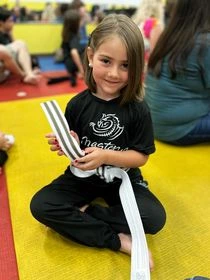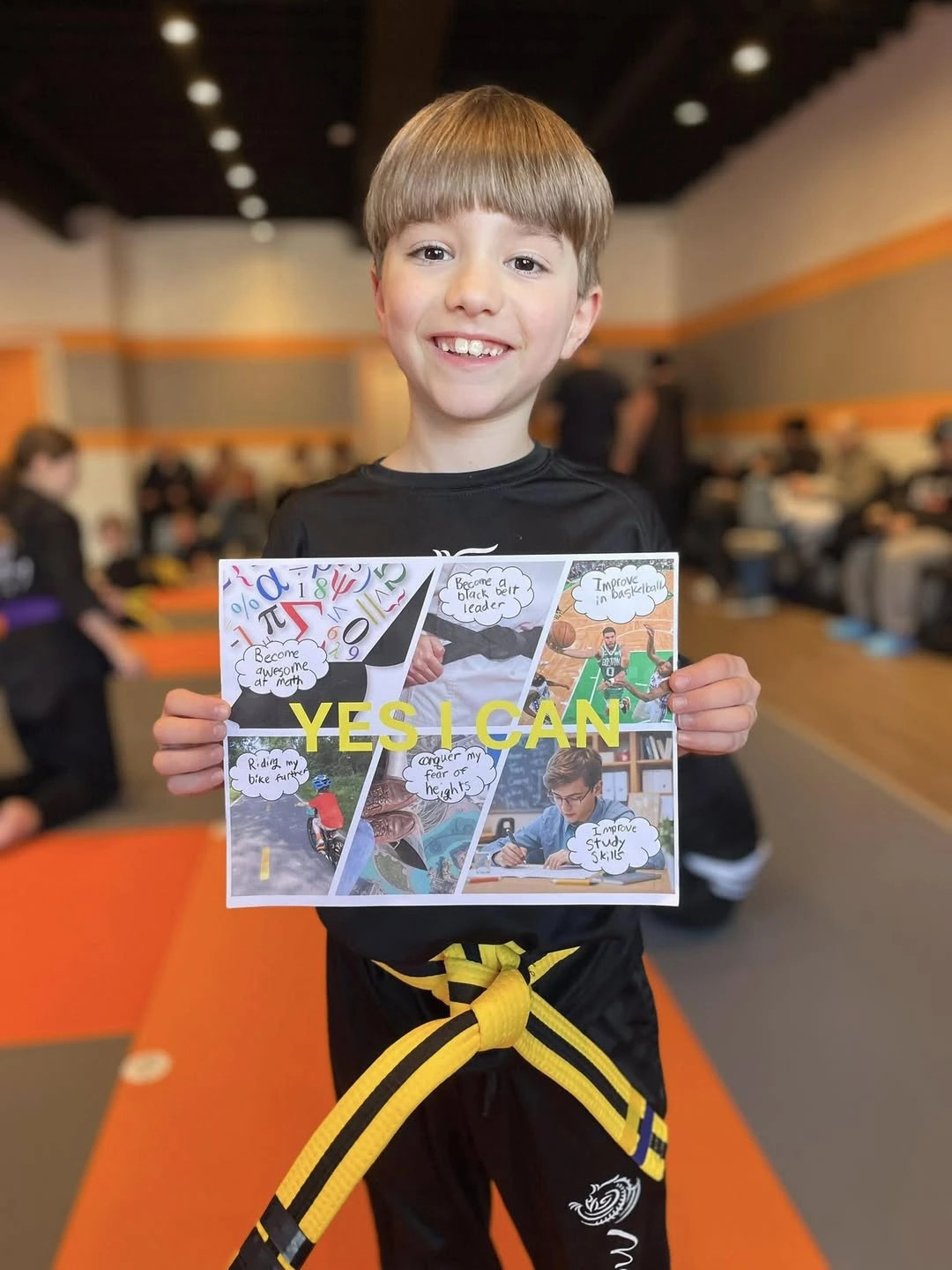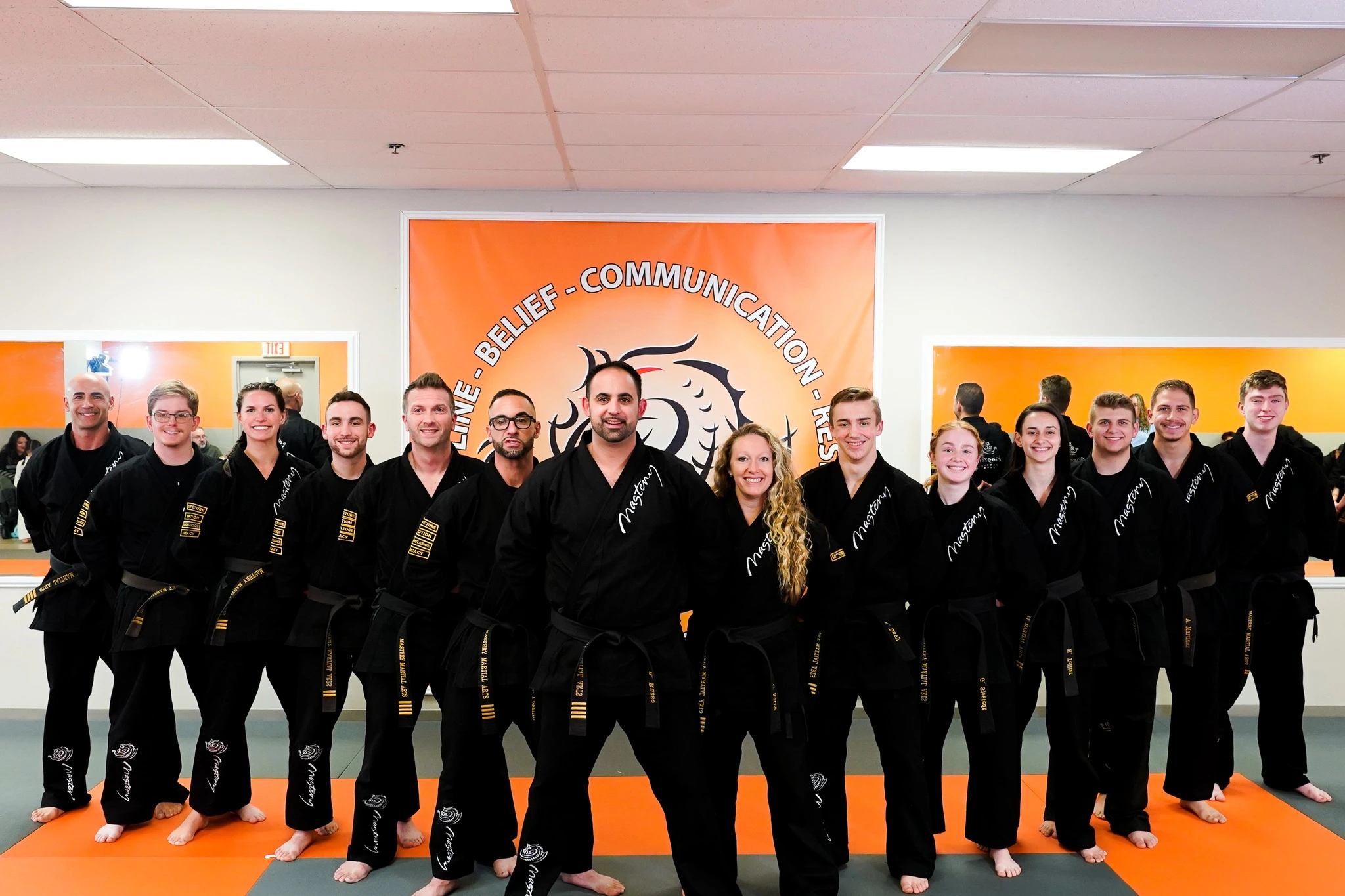The Complete Guide to Kids Karate Classes
Building Confident Young Leaders Through Martial Arts
When parents in Troy, Michigan, and surrounding communities search for ways to help their children develop confidence, discipline, and physical fitness, kids karate classes consistently emerge as one of the most effective solutions. The ancient art of karate, when properly adapted for young learners, offers a unique combination of physical training, character development, and life skills that can profoundly impact a child’s growth and development.
Kids karate classes have evolved significantly from their traditional roots, incorporating modern teaching methodologies and child development principles to create programs that are both engaging and educational. Unlike many other youth activities that focus solely on physical development or entertainment, quality kids karate classes address the whole child, nurturing mental, emotional, and social growth alongside physical capabilities.
The growing popularity of kids karate classes reflects parents‘ increasing awareness of the comprehensive benefits these programs provide. Research consistently demonstrates that children who participate in structured martial arts training show improvements in academic performance, social skills, and emotional regulation. These benefits extend far beyond the dojo, influencing how children approach challenges in school, relationships with peers, and their overall self-perception.
Understanding the Foundation of Kids Karate Classes
The effectiveness of kids karate classes lies in their systematic approach to child development. Traditional karate principles of respect, discipline, and perseverance are woven throughout every aspect of training, creating an environment where children naturally absorb these values while learning physical techniques. This integration of character education with physical training distinguishes quality kids karate classes from other youth activities.
Modern kids karate classes are carefully structured to accommodate the developmental needs of different age groups. Instructors trained in child development understand that a four-year-old learns differently than a twelve-year-old, and effective programs reflect this understanding in their curriculum design. The progression through belt ranks provides clear goals and milestones, giving children a sense of achievement and motivation to continue their martial arts journey.

The physical aspects of kids karate classes are designed to improve coordination, balance, flexibility, and strength in age-appropriate ways. Unlike adult training that might focus on power and intensity, children’s programs emphasize proper form, control, and gradual skill development. This approach ensures that young students build a solid foundation while minimizing the risk of injury.
Safety considerations are paramount in well-designed kids karate classes. Qualified instructors maintain appropriate student-to-teacher ratios, use age-appropriate equipment, and modify techniques to ensure they are suitable for developing bodies. The controlled environment of a professional dojo provides a safe space for children to challenge themselves physically while learning to respect boundaries and follow safety protocols.
Age-Specific Programming in Kids Karate Classes
The most effective kids karate classes recognize that children’s physical, cognitive, and emotional development occurs in distinct stages, requiring tailored approaches for different age groups. This understanding forms the foundation of successful martial arts programs that can effectively serve children from preschool through their teenage years.
Early Childhood Programs (Ages 4-6)
Kids karate classes for the youngest students focus primarily on fundamental movement skills and basic social development. At this age, children are developing gross motor skills, learning to follow instructions, and beginning to understand concepts like taking turns and respecting others. The curriculum for this age group emphasizes fun, engaging activities that introduce basic karate movements while developing these essential skills.

Instructors working with young children in kids karate classes understand that attention spans are limited and learning occurs best through play-based activities. Simple games that incorporate karate stances, basic kicks, and punches help children develop muscle memory while keeping them engaged. The emphasis is on participation and effort rather than perfect technique, building confidence and a positive association with physical activity.
Character development in early childhood kids karate classes focuses on basic concepts like listening, following directions, and treating others with kindness. These lessons are reinforced through consistent routines, clear expectations, and positive reinforcement. Children at this age are naturally eager to please and respond well to praise and recognition for their efforts.
Elementary School Programs (Ages 7-9)
As children enter elementary school, kids karate classes can introduce more structured learning and begin to emphasize technique development alongside character building. Students in this age group have longer attention spans and can handle more complex instructions, allowing for the introduction of formal karate techniques and basic self-defense concepts.
The curriculum for elementary-age kids karate classes typically includes fundamental stances, basic strikes, blocks, and kicks, taught with an emphasis on proper form and control. Students begin to learn simple combinations and may be introduced to basic sparring concepts in a highly controlled environment. The belt ranking system becomes more meaningful at this age, providing clear goals and recognition for achievement.
Character development in kids karate classes for this age group expands to include concepts like goal setting, perseverance, and helping others. Students may be given opportunities to assist with younger children’s classes, developing leadership skills and reinforcing their own learning. The social aspects of training become more important as children form friendships and learn to work together as a team.
Middle School Programs (Ages 10-12)
Pre-adolescent students in kids karate classes are capable of more sophisticated training while navigating the social and emotional challenges of middle school. Programs for this age group can introduce more advanced techniques, increase physical conditioning, and place greater emphasis on mental discipline and focus.
The technical curriculum for middle school kids karate classes often includes more complex forms (kata), advanced self-defense techniques, and controlled sparring with appropriate protective equipment. Students at this level are expected to demonstrate greater precision in their techniques and may begin to explore the philosophical aspects of martial arts training.
Character development becomes increasingly important as students face peer pressure and academic challenges. Kids karate classes for this age group emphasize concepts like integrity, self-control, and leadership. Students may be given responsibilities within the school, such as helping to teach younger students or assisting with demonstrations, fostering a sense of responsibility and community involvement.

Teen Programs (Ages 13-16)
Teenage students in kids karate classes are preparing for adulthood and can handle training that closely resembles adult programs while still maintaining age-appropriate modifications. These programs often serve as a bridge between youth and adult training, preparing students for lifelong martial arts practice.
Advanced technical training in teen kids karate classes may include complex combinations, advanced sparring techniques, and weapons training where appropriate. Students at this level are expected to demonstrate mastery of fundamental techniques and may begin preparing for black belt testing. The physical conditioning component becomes more intensive, helping teenagers develop strength, endurance, and athletic ability.
Leadership development is a crucial component of teen kids karate classes. Students at this level often serve as role models for younger children and may assist with instruction. This responsibility helps develop communication skills, patience, and a deeper understanding of the martial arts principles they have been learning throughout their training.
The Comprehensive Benefits of Kids Karate Classes
The benefits of kids karate classes extend far beyond learning to kick and punch. Research in child development and sports psychology has consistently demonstrated that children who participate in quality martial arts programs experience improvements across multiple domains of development. These benefits often persist long after children complete their training, influencing their approach to challenges throughout their lives.
Physical Development and Health Benefits
Kids karate classes provide exceptional physical conditioning that addresses all aspects of fitness in age-appropriate ways. Unlike sports that may focus on specific muscle groups or movement patterns, karate training develops overall body awareness, coordination, and functional strength. The varied movements required in karate training help children develop bilateral coordination, balance, and spatial awareness that benefits them in all physical activities.
Cardiovascular fitness improves significantly through regular participation in kids karate classes. The dynamic nature of karate training, which alternates between periods of intense activity and focused technique practice, provides excellent aerobic conditioning while building muscular endurance. This type of training is particularly beneficial for children who may not enjoy traditional team sports or running-based activities.
Flexibility and mobility are natural byproducts of kids karate classes, as the techniques require full range of motion in all major joints. Regular stretching and movement practice help children maintain and improve their natural flexibility, which often decreases as they spend more time in sedentary activities like schoolwork and screen time. The emphasis on proper posture and body alignment in karate training also helps counteract the negative effects of prolonged sitting.
Strength development in kids karate classes occurs gradually and naturally through bodyweight exercises and technique practice. Unlike weight training, which is generally not recommended for young children, karate training builds functional strength through movements that children will use throughout their lives. The progressive nature of martial arts training ensures that strength development occurs at an appropriate pace for each child’s developmental stage.
Cognitive and Academic Benefits
The mental aspects of kids karate classes contribute significantly to cognitive development and academic performance. The requirement to memorize techniques, forms, and sequences exercises working memory and helps children develop better retention skills. The complex movements required in karate training also stimulate neural pathways that support learning in other areas.
Focus and concentration are perhaps the most notable cognitive benefits of kids karate classes. The meditative aspects of martial arts training, combined with the need for precise technique execution, help children develop sustained attention skills. Many parents report that their children show improved focus in school and homework completion after beginning karate training.
Problem-solving skills develop naturally through kids karate classes as students learn to adapt techniques to different situations and opponents. The strategic thinking required in sparring and self-defense scenarios helps children develop analytical skills and the ability to think quickly under pressure. These skills transfer readily to academic subjects and real-world situations.
Goal setting and achievement are integral components of kids karate classes through the belt ranking system. Children learn to set both short-term and long-term goals, develop plans to achieve them, and persist through challenges. This process teaches valuable life skills about effort, patience, and the relationship between practice and improvement.
Emotional and Social Development
The emotional benefits of kids karate classes are often the most transformative for children and families. The supportive environment of a quality martial arts school provides a safe space for children to challenge themselves, experience failure and success, and develop emotional resilience. The emphasis on respect and courtesy in martial arts training helps children develop empathy and consideration for others.
Self-confidence grows naturally through kids karate classes as children master new skills and overcome challenges. The non-competitive nature of belt testing allows each child to progress at their own pace, building confidence through personal achievement rather than comparison to others. This internal focus helps children develop a healthy sense of self-worth based on effort and improvement rather than external validation.
Emotional regulation is a crucial skill developed through kids karate classes. The physical nature of training provides a healthy outlet for energy and emotions, while the mental discipline required helps children learn to control their reactions. The emphasis on respect and self-control in martial arts training gives children tools for managing anger, frustration, and other challenging emotions.
Character Development and Life Skills
Character development is perhaps the most distinctive benefit of kids karate classes compared to other youth activities. The traditional values of martial arts—respect, integrity, perseverance, self-control, and indomitable spirit—are woven throughout every aspect of training. These values are not simply discussed but are practiced and reinforced through daily interactions and training activities.
Respect is fundamental to kids karate classes, beginning with bowing to instructors and fellow students and extending to care for equipment and the training space. Children learn to respect authority figures, peers, and themselves through consistent practice of martial arts etiquette. This respect translates to improved behavior at home and school.
Discipline and self-control are developed through the structured nature of kids karate classes and the emphasis on following instructions precisely. Children learn that success requires consistent effort and attention to detail. The physical control required in martial arts techniques teaches children to manage their bodies and impulses effectively.
Perseverance is built into the structure of kids karate classes through the belt ranking system and the gradual progression of skills. Children learn that mastery takes time and effort, and that setbacks are part of the learning process. This understanding helps them approach challenges in other areas of life with greater resilience and determination.
Leadership skills develop naturally as children advance in their kids karate classes training. Senior students are expected to help junior students, teach techniques, and serve as positive role models. These opportunities help children develop communication skills, patience, and a sense of responsibility for others.
Choosing the Right Kids Karate Classes Program
Selecting appropriate kids karate classes requires careful consideration of multiple factors to ensure that the program will meet your child’s needs and provide a positive experience. The quality of instruction, safety protocols, and program structure can vary significantly between schools, making research and evaluation essential for parents.
Instructor Qualifications and Training

Background checks and safety certifications should be standard requirements for all instructors in kids karate classes programs. Reputable schools will readily provide information about their instructor screening processes and safety protocols. Many quality programs also require instructors to complete first aid and CPR certification.
Ongoing education and training demonstrate an instructor’s commitment to excellence in kids karate classes instruction. Look for instructors who regularly attend seminars, workshops, and training sessions to improve their teaching skills and stay current with best practices in youth martial arts education.
Program Structure and Curriculum
School Culture and Environment
The Role of Parents in Supporting Kids Karate Classes Success
Parental support and involvement play crucial roles in determining the success and benefits children derive from kids karate classes. While the instruction and training occur in the dojo, the attitudes and behaviors parents model at home significantly influence how children approach their martial arts training and integrate the lessons into their daily lives.
Creating a Supportive Home Environment
Understanding the Learning Process
Communication with Instructors
Safety Considerations in Kids Karate Classes
Injury Prevention and Risk Management
Medical Considerations and Accommodations
Creating a Culture of Safety
Frequently Asked Questions About Kids Karate Classes
Parents considering kids karate classes for their children often have similar questions and concerns about martial arts training. Understanding these common questions and their answers helps families make informed decisions about participation and sets appropriate expectations for the martial arts journey.